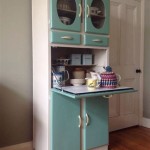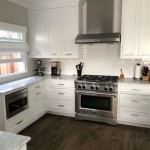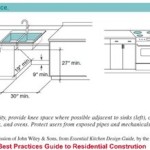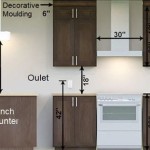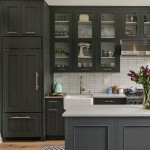What Kind of Sandpaper Should I Use to Sand My Kitchen Cabinets?
Sanding your kitchen cabinets is a crucial step in refinishing them. The type of sandpaper you choose will affect the quality of the finish, so it's important to select the right one for the job. Here are the essential aspects to consider when choosing sandpaper for sanding your kitchen cabinets.
Grit
Grit refers to the coarseness of the sandpaper. It is measured in numbers, with lower numbers indicating coarser grits and higher numbers indicating finer grits. For sanding kitchen cabinets, you will need a variety of grits to remove old finish, smooth the surface, and achieve a desired finish.
- 80-120 grit: Use for removing old finish and deep scratches.
- 150-220 grit: Use for smoothing the surface after removing the old finish.
- 320-400 grit: Use for sanding between coats of paint or primer to remove any imperfections.
- 600 grit or higher: Use for final sanding to achieve a smooth, polished finish.
Material
Sandpaper can be made from different materials, each with its own advantages and disadvantages.
- Aluminum oxide: Most common type of sandpaper, durable and versatile, good for general sanding.
- Silicon carbide: Sharper than aluminum oxide, faster cutting, good for sanding harder woods.
- Ceramic: Most durable and expensive type of sandpaper, long-lasting, good for sanding metal or composites.
Backing
The backing of the sandpaper determines how it is attached to the sanding block or sander. There are two main types of backing:
- Cloth backing: Flexible, conforms to curves, good for hand sanding.
- Paper backing: Less flexible, more durable, good for machine sanding.
Type of Sander
The type of sander you are using will also influence your choice of sandpaper. Orbital sanders require round sanding pads, while belt sanders use long strips of sandpaper. Choose sandpaper that is compatible with your sander.
Additional Considerations
In addition to the essential aspects mentioned above, here are some other factors to consider:
- Grain orientation: Open coat sandpaper has spaces between the grains, allowing dust to escape and preventing clogging.
- Sharpness: New sandpaper will cut faster and more efficiently than used sandpaper.
- Budget: Sandpaper can vary in price, so factor this into your decision.
Conclusion
Choosing the right sandpaper for sanding your kitchen cabinets is essential for achieving a professional-looking finish. By considering the grit, material, backing, type of sander, and additional factors, you can select the sandpaper that is best suited for your specific needs. Remember to start with a coarser grit and gradually move to finer grits as you progress through the sanding process.

A Guide To Painting Kitchen Cabinets Norton Abrasives

A Guide To Painting Kitchen Cabinets Norton Abrasives
Refinishing Kitchen Cabinets A Beautiful Mess
Refinishing Kitchen Cabinets A Beautiful Mess

Sanding Techniques For Cabinets Get The Perfect Finish Cabinet Doors N More

Refinish Kitchen Cabinets With Kilz Restoration Primer

How To Paint Kitchen Cabinets A Step By Guide Confessions Of Serial Do It Yourselfer

Craving A Kitchen Makeover Start With The Cabinets Perfect Finish Blog By Kilz

Staining Kitchen Cabinets Pictures Ideas Tips From

How To Paint Oak Cabinets And Hide The Grain Tutorial
Related Posts


